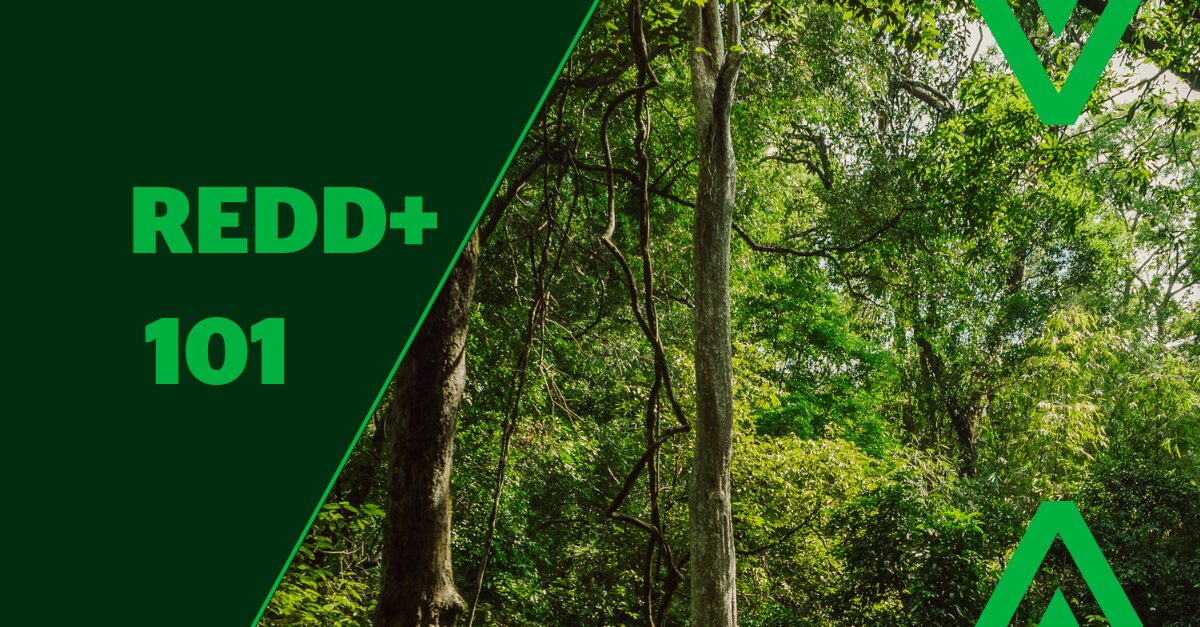
Using private market finance to protect tropical forests from destruction has gained traction in the past few years. However, this concept has actually been evolving for decades.
REDD stands for Reducing Emissions from Deforestation and forest degradation in Developing countries. The ‘+’ refers to additional forest-related activities that reduce emissions, such as sustainable forest management and conservation.
In 1997, the Kyoto Protocol was adopted at the third Conference of Parties (COP3), marking a significant victory in the global fight against climate change. The Kyoto Protocol was the first international treaty to set binding, national targets for reducing greenhouse gas emissions, and it also recognized that “land use, land use change and forestry activities” generate significant carbon emissions. This set the stage for countries to trade removal units, i.e. carbon credits to achieve individual emissions reductions targets. However, due to initial concerns over the permanence of carbon credits generated by avoiding deforestation, only removal units generated by reforestation and afforestation projects were allowed to be traded under Kyoto Protocol’s various market-based mechanisms. As the value of protecting forests from illegal logging was increasingly recognized by the global community, the generation of emissions reductions through “avoiding deforestation” was finally added to the agenda at COP11 in Montreal (2005) by Papua New Guinea and Costa Rica — marking the first mention of REDD on an international policy platform.
| Permanence: The permanence of carbon credits refers to the long-term durability of the emissions reductions that the credits represent. It is important to ensure that emissions reductions claimed by REDD+ projects will endure over time, and that measures are taken to combat risks that offsets generated from avoiding deforestation could be released back into the atmosphere in the case of unforeseen events such as fires or disease, or due to anthropogenic factors. This is done by establishing a buffer pool of credits, which are used to compensate for unexpected losses of offsets. Additionality: It is important to ensure that offsets are additional, i.e. that without the intervention of the carbon offset program, these emissions reductions would not be generated. In the context of REDD+ projects, additionality is demonstrated by identifying and quantifying the risks that forests in the project area face from deforestation. Leakage: It is possible that REDD+ project activities can directly cause carbon-emitting activities to be shifted to another location outside of the project boundaries, thereby canceling out some or all of the project’s emissions avoided benefits. This spillover of deforestation from the project area to the surrounding regions, known as leakage, should be taken into account in the design of REDD+ projects account. Increasingly, this is done by implementing larger-scale solutions, such as nesting REDD+ projects at a jurisdictional or national level, which helps to account for leakage within a larger monitoring area. |
High-integrity REDD+ projects should conduct thorough due diligence and use appropriate project design to ensure project activities adequately address leakage issues, and that REDD+ projects generate permanent and additional emissions reductions.
Decade-long negotiations over concerns of leakage, additionality, and permanence of REDD+ culminated in the creation of the Warsaw Framework, which was adopted in 2013 at COP19. The Warsaw Framework outlines how a REDD+ strategy can be created and implemented at a national level by developing countries to generate results-based payment for their efforts in forest conservation.
| The Warsaw Framework The framework provides technical guidance on how REDD+ can be implemented on a national level, and how countries can receive results-based payment for implementing REDD+ projects. There are five key requirements: 1. Establish a National REDD+ Strategy 2.Calculate and verify a Forest Reference Level (FREL, to form a national baseline deforestation rate) 3.Ensure REDD+ safeguards are addressed 4. Come up with a National Forest Monitoring System 5. Verify REDD+ results Completing all five requirements allows developing countries to obtain payment for their efforts in forest conservation. |
In the meantime, the idea of generating carbon offsets by paying forest communities in ‘developing’ countries to avoid deforestation garnered growing interest from private investors, resulting in the proliferation of REDD+ projects in the voluntary carbon market. Carbon standards and safeguards like the Verified Carbon Standard and the American Carbon Registry also emerged to help draw up methodologies for evaluating how much carbon a forest contains, and how at risk they are from deforestation. Organizations like the Climate, Community and Biodiversity Alliance were developed to identify and ensure best practices in supporting local communities and conserving biodiversity within REDD+ projects. As the voluntary carbon market increased in value over the years, led by the dominance of REDD+ projects, regional and national support for establishing REDD+ programs and projects also increased.

As the voluntary carbon market continues to grow and scale, we can expect to see REDD+ projects link up and expand to ensure sustainable forest management at a regional or national level, and for emissions reductions generated by REDD+ activities to be used to achieve Nationally Determined Contributions (NDCs) set out in the Paris Agreement.
| The Paris Agreement and REDD+ Superseding the Kyoto Protocol, the Paris Agreement is a legally-binding, international treaty that aims to limit the increase in global temperatures to “well below 2 degree Celsius above pre-industrial levels”. It brings together all nations to set Nationally Determined Contributions (NDCs), or emissions reductions targets, in five-year cycles to gradually reduce their greenhouse gas emissions and collectively achieve the goals of the Paris Agreement. REDD+ is mentioned in Article 5 of the Paris Agreement, where Parties are encouraged to support and implement “activities relating to reducing emissions from deforestation and forest degradation, and the role of conservation, sustainable management of forests and enhancement of forest carbon stocks in developing countries” in accordance to the Warsaw Framework. REDD+ is also referenced in Article 6 of the Paris Agreement, which allows countries to voluntarily trade “emissions reductions” with each other to achieve targets set out in their NDCs. |
